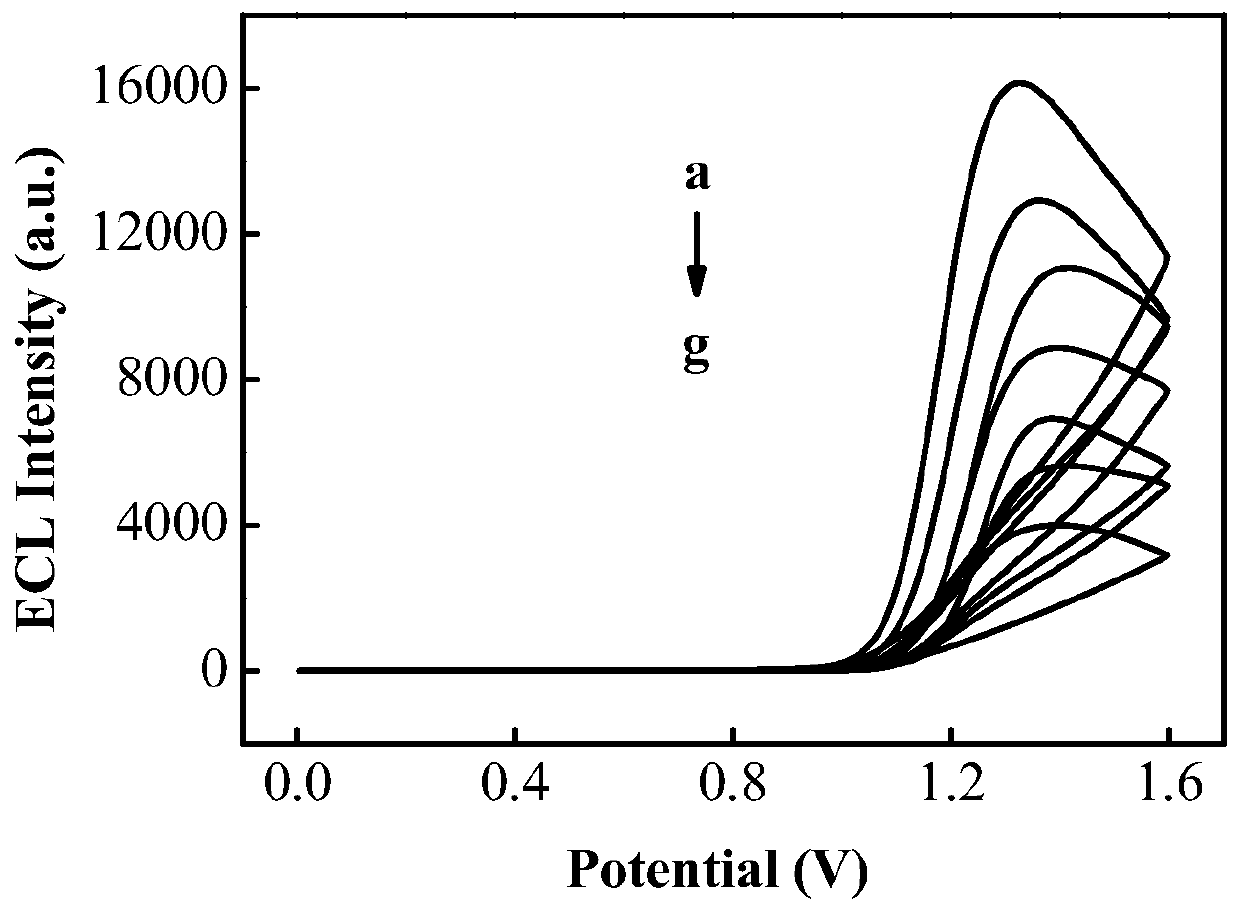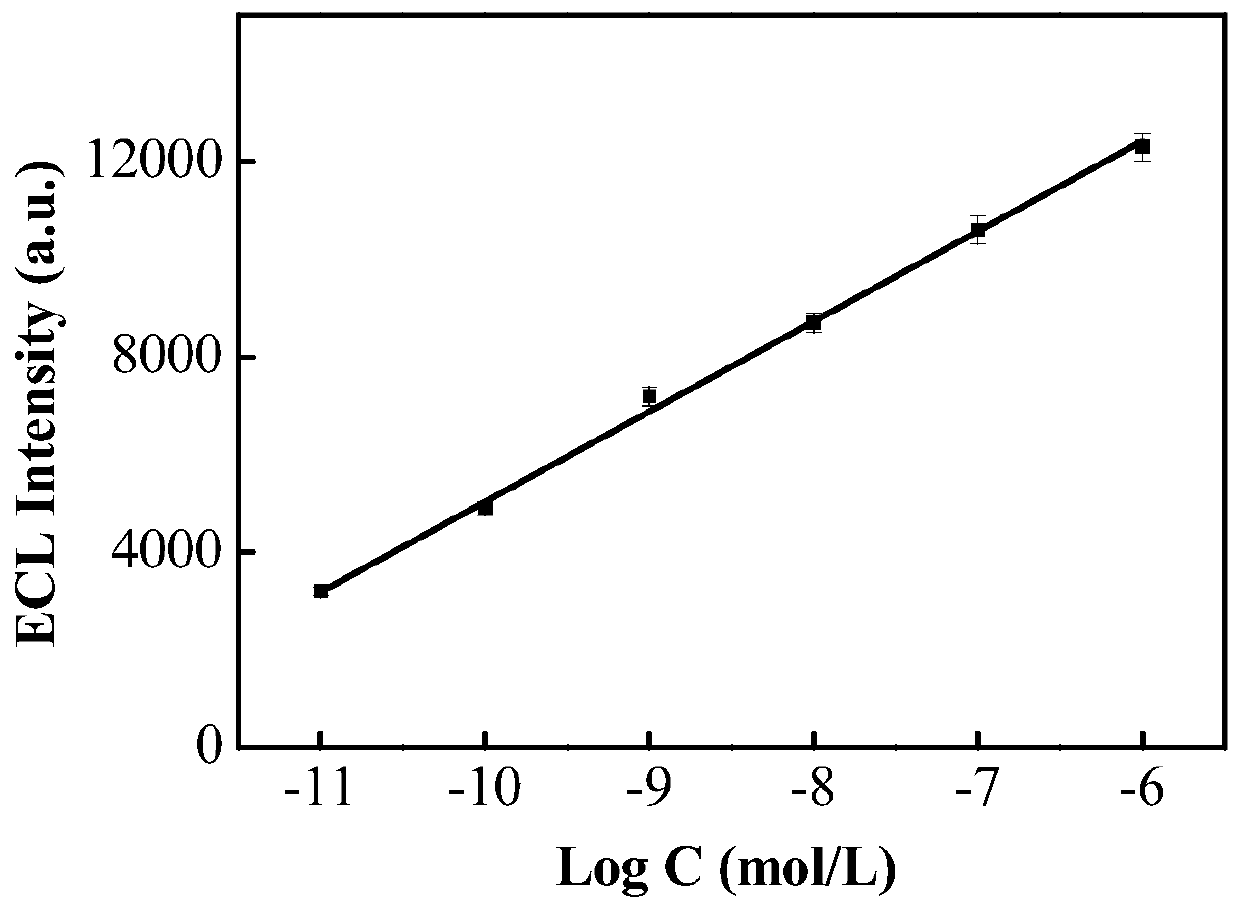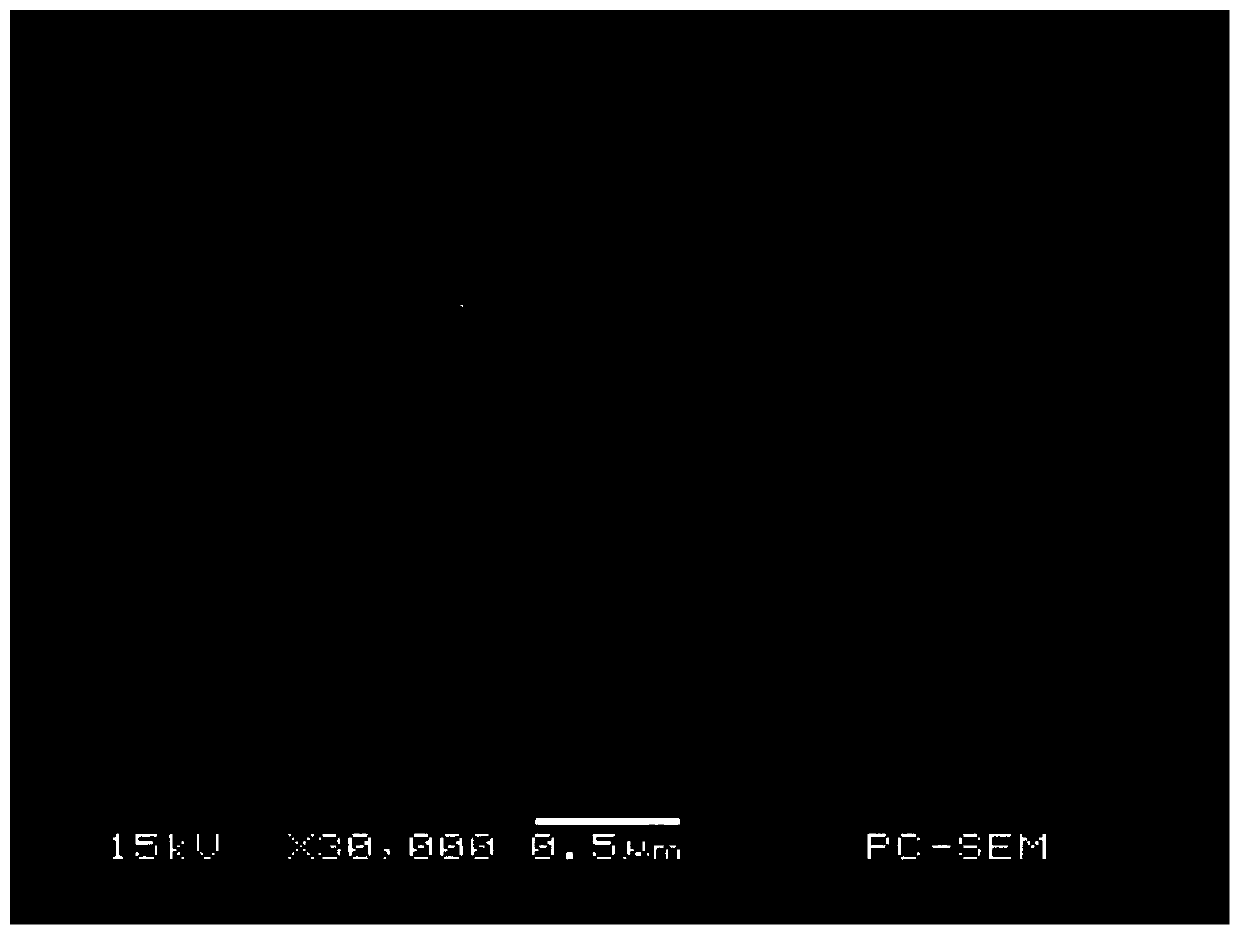Electrochemiluminescence for detecting bisphenol A
An electrochemical and bisphenol-based technology, applied in the field of electrochemiluminescence for the detection of bisphenol A, can solve problems such as low attention, irregular management, and complicated experimental operations
- Summary
- Abstract
- Description
- Claims
- Application Information
AI Technical Summary
Problems solved by technology
Method used
Image
Examples
Embodiment
[0027](1) Mix 36mL of DMF and 4mL of methanol to obtain a mixed solvent, then dissolve 2.2g of terephthalic acid in the mixed solvent, and ultrasonically mix to obtain a transparent mixed solution, add 2.4mL of tetrabutyl titanate, and continue to ultrasonically stir for 15 minutes . After mixing evenly, add the above mixed solution into a polytetrafluoroethylene-lined stainless steel autoclave and react at 150°C for 48 hours. After the reaction is completed, centrifuge and wash with ethanol and deionized water respectively, and finally put the washed product Dry it in a vacuum oven at 50°C to obtain light yellow powder MIL-125. The particle size of MIL-125 prepared by this method is about 500nm, and the measured specific surface area is 1591m 2 / g, the pore volume is 0.59cm 3 / g, Ru(bpy) can be fixed well through its microporous structure 3 2+ .
[0028] Add 25mg of MIL-125 to 15mL 1.0×10 -4 mol / L Ru(bpy) 3 2+ solution, mix well and then centrifuge. Put the final pro...
PUM
| Property | Measurement | Unit |
|---|---|---|
| particle diameter | aaaaa | aaaaa |
Abstract
Description
Claims
Application Information
 Login to View More
Login to View More - R&D
- Intellectual Property
- Life Sciences
- Materials
- Tech Scout
- Unparalleled Data Quality
- Higher Quality Content
- 60% Fewer Hallucinations
Browse by: Latest US Patents, China's latest patents, Technical Efficacy Thesaurus, Application Domain, Technology Topic, Popular Technical Reports.
© 2025 PatSnap. All rights reserved.Legal|Privacy policy|Modern Slavery Act Transparency Statement|Sitemap|About US| Contact US: help@patsnap.com



